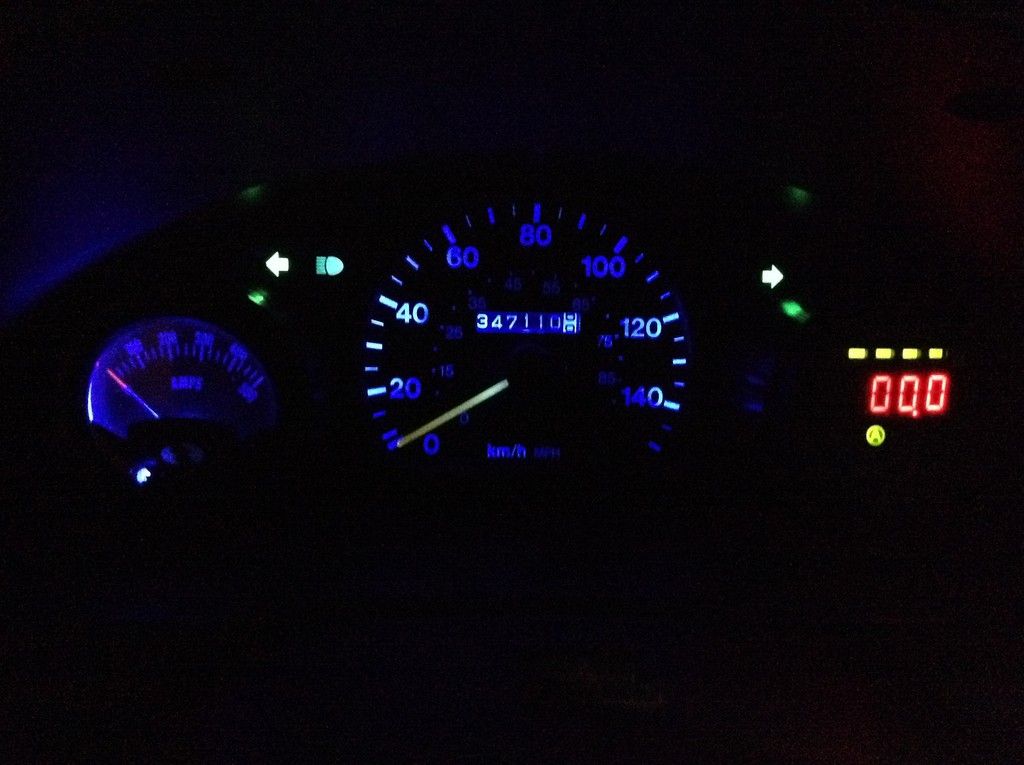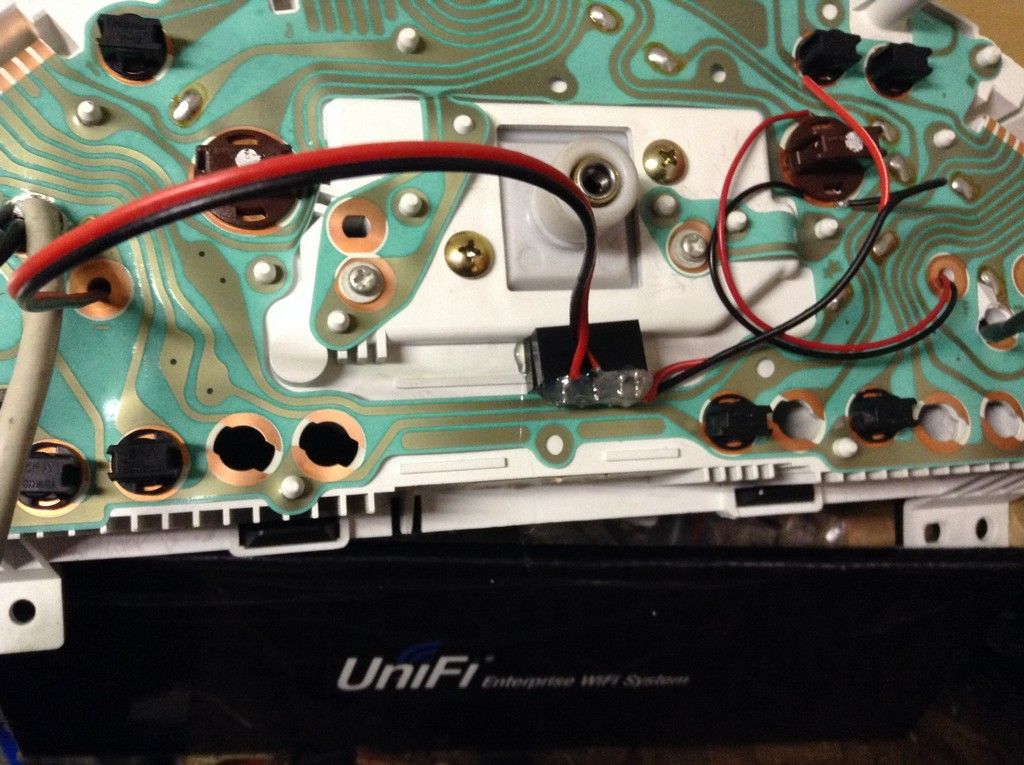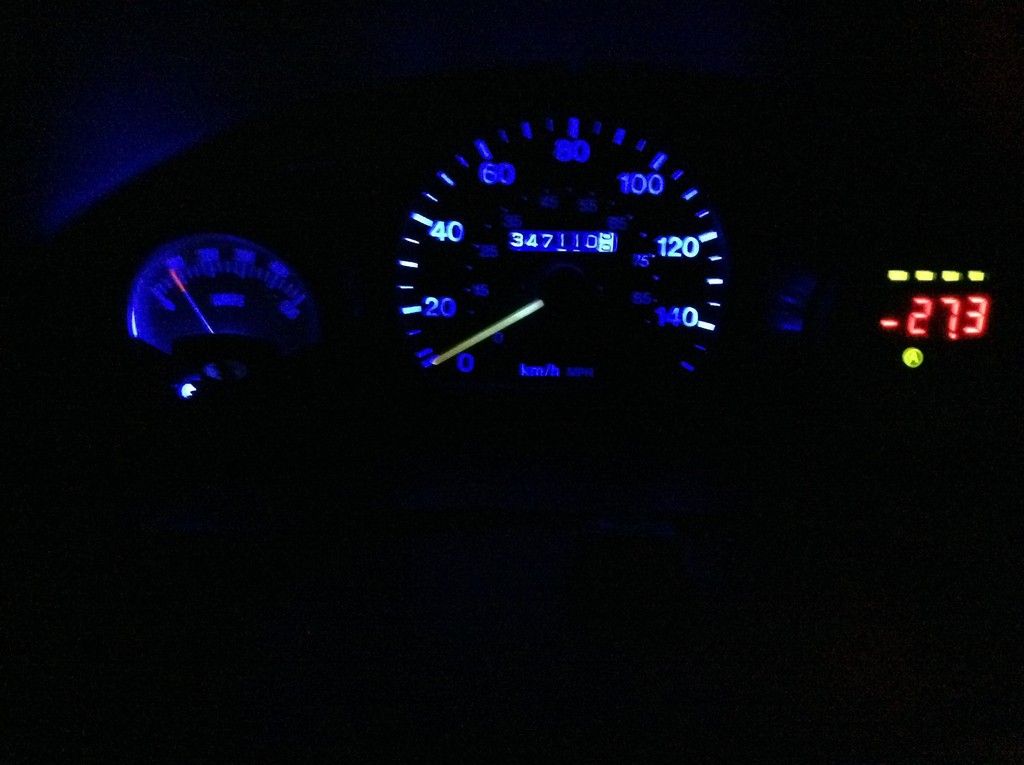 12-13-2016, 03:41 PM
12-13-2016, 03:41 PM
|
#141 (permalink)
|
|
Master EcoModder
Join Date: Sep 2010
Location: Saskatoon, canada
Posts: 1,488
Thanks: 746
Thanked 565 Times in 447 Posts
|
Quote:
Originally Posted by Stubby79

I have the shunt on the negative side, as required. I have checked the shunt voltage at the meter itself. It's still the same as it is at the shunt. I get 7.7mv at the shunt, and my clamp meter shows 77 amps, which corresponds nicely. It's a 500a, 50mv shunt. 1mv = 10a. 7.7mv = 77a. Meter reads 94.
...
I put a bigger load on it. 1.0 ohm, on my 12-volt battery. Link 10 showed 11.8a. As did my clamp meter. Still showing accurate.
|
Does it seem that the connection to the pack is dropping some voltage when under significant load?
If low current looks close, but high current does not. Perhaps voltage drop from negative on shunt to pack?
But when you reverse the leads on the shunt, it shows error in the other direction, like an offset ... sounds like voltage drop from negative on the shunt to the pack negative.
Can you add a bigger cable between negative shunt and negative pack to see if it changes the reading? Or is something else easier .. like adding another shunt in series on the negative side (like maybe 1000A 50mv). That should give you an extra 48 mv offset and show much lower or higher current on the link 10
I'd only do the extra shunt test for a few seconds. No telling what sort of stress that puts on the internals of the Link-10?
Does anyone have an idea that is easier or poses less threat of damage?
|
|
|

|
 Today Today
|
|
|
|
 Other popular topics in this forum...
Other popular topics in this forum...
|
|
|
|
 12-13-2016, 04:16 PM
12-13-2016, 04:16 PM
|
#142 (permalink)
|
|
EcoModding Apprentice
Join Date: Jul 2016
Location: The Land Downunder
Posts: 229
CT - '11 Lexus CT200h Luxury
Thanks: 26
Thanked 80 Times in 61 Posts
|
post up a sketch of how it is wired. sounds like the ground that you are using for power to the Link 10 has some ground offset from the negative side of the main battery. Just for giggles, can you power the Link 10 from a battery that is not connected at all to the car? I think that this will fix the issue if my gut feel is accurate.
Simon
|
|
|

|
|
The Following User Says Thank You to LittleBlackDuck For This Useful Post:
|
|
 12-13-2016, 09:54 PM
12-13-2016, 09:54 PM
|
#143 (permalink)
|
|
Master EcoModder
Join Date: Sep 2012
Location: Victoria, BC
Posts: 1,747
Thanks: 75
Thanked 577 Times in 426 Posts
|
Quote:
Originally Posted by LittleBlackDuck

post up a sketch of how it is wired. sounds like the ground that you are using for power to the Link 10 has some ground offset from the negative side of the main battery. Just for giggles, can you power the Link 10 from a battery that is not connected at all to the car? I think that this will fix the issue if my gut feel is accurate.
Simon
|
I'm bench testing. And powering from a completely separate battery, then through the isolators. There is no electrical connection between the power supply and the substitute battery pack. And I didn't have the voltage sensing wires hooked up at the time, so the common ground that the Link 10 and both batteries are supposed to have isn't there.
I suppose that could be the issue. But that seems weird to me. It's just reading amps by the voltage difference between one side and the other of the shunt, a dead simple thing in my mind.
I'll hook up the voltage sensing leads, and see if being "grounded" will affect it in any way. Thanks. |
|
|

|
 12-13-2016, 10:13 PM
12-13-2016, 10:13 PM
|
#144 (permalink)
|
|
Master EcoModder
Join Date: Sep 2012
Location: Victoria, BC
Posts: 1,747
Thanks: 75
Thanked 577 Times in 426 Posts
|
Quote:
Originally Posted by thingstodo

Can you add a bigger cable between negative shunt and negative pack to see if it changes the reading? Or is something else easier .. like adding another shunt in series on the negative side (like maybe 1000A 50mv). That should give you an extra 48 mv offset and show much lower or higher current on the link 10
|
While it won't give me a 48mv offset, if I put a second, equal shunt in series and have the meter read across both of them, it should give me twice the voltage drop, thus should show twice the amperage as is actually passing through. It should have little effect otherwise, but it will at least tell me if it's going to throw off the meter even more with twice as much current reading. IE me 77 amps should now show as 144. Will it show 126/188 amps, or will it show even farther off?
Simply swapping shunts for one with a completely different range - like 100amps - will have the same effect and probably avoid potential voltage drops from weak connections, which might end up with more than the 50mv being sent to the Link 10. I'll be very careful whatever I do before letting anything pass to the Link 10.
Thanks for the ideas, guys. I'll give them a try.  |
|
|

|
 12-14-2016, 10:41 AM
12-14-2016, 10:41 AM
|
#145 (permalink)
|
|
Master EcoModder
Join Date: Sep 2012
Location: Victoria, BC
Posts: 1,747
Thanks: 75
Thanked 577 Times in 426 Posts
|
Quote:
Originally Posted by LittleBlackDuck

post up a sketch of how it is wired. sounds like the ground that you are using for power to the Link 10 has some ground offset from the negative side of the main battery. Just for giggles, can you power the Link 10 from a battery that is not connected at all to the car? I think that this will fix the issue if my gut feel is accurate.
Simon
|

You're the winner!
As soon as I hooked up the ground to the negative of the battery, it started reading accurately at higher current levels. Who'd'a thunk?
Boy, that was a silly oversight!  |
|
|

|
|
The Following User Says Thank You to Stubby79 For This Useful Post:
|
|
 12-14-2016, 11:13 AM
12-14-2016, 11:13 AM
|
#146 (permalink)
|
|
Master EcoModder
Join Date: Sep 2012
Location: Victoria, BC
Posts: 1,747
Thanks: 75
Thanked 577 Times in 426 Posts
|
EVerything back in!

Yes, it needs dusting!
Everything still working!

Where not to mount your isolators!
 |
|
|

|
|
The Following User Says Thank You to Stubby79 For This Useful Post:
|
|
 12-18-2016, 08:37 PM
12-18-2016, 08:37 PM
|
#147 (permalink)
|
|
Master EcoModder
Join Date: Sep 2012
Location: Victoria, BC
Posts: 1,747
Thanks: 75
Thanked 577 Times in 426 Posts
|

Spent the afternoon wiring in my gauges and their sensors/shunts/scalers.
In order:
1. Battery shunt bus bar to the traction pack negative battery terminal, then out to controller. Sensing wires on either side of shunt to the Link-10 battery monitor.
2. Voltage scaler to + and - traction battery pack terminals, then out to Link-10. (it can't handle over 40 volts without it)
3. Motor shunt bus bar to one motor terminal, the other side of shunt out to the controller. Sensing wires run to the separate ammeter in the instrument cluster.
Preceding this a couple of days ago was re-configuring my + line from the traction pack. It took up the full width of my battery pack as I had the copper bus bars laid out before. I wanted space there to hold the shunt, thus the reconfiguring to make things much more compact. Said line contains the breaker and the contactor before going out to the motor controller.
My current/rough layout:

From left to right (and top to bottom): Battery, Pot-box/breaker/contactor/shunt, controller on heatsink, temporary 12v battery. And yes, what's turning in to a mess of wires.
Motor shunt:

Until I decide on a better way to mount it, anyway.
Checking that everything works:

And a silly little video that shows the motor ammeter in action:
Now I can see exactly what my battery and motor are doing at any given moment. 
So if I blow anything up, I'll not have the excuse that I didn't know what was happening under the hood.  |
|
|

|
|
The Following 2 Users Say Thank You to Stubby79 For This Useful Post:
|
|
 12-19-2016, 10:30 AM
12-19-2016, 10:30 AM
|
#148 (permalink)
|
|
Master EcoModder
Join Date: Sep 2012
Location: Victoria, BC
Posts: 1,747
Thanks: 75
Thanked 577 Times in 426 Posts
|
A quick boot up and down the street with the gauges working gave me an idea of what's going on under the hood. Exactly what I needed to know before getting much farther.
I never saw more than ~150 battery amps being pulled. However, it took no effort to peg the 500a motor ammeter on take off in first, and most of the time in 2nd.
This tells me I need to add some field control, so I have more torque on take-off or when I need to accelerate in "too high" of a gear.
I also need to check the settings on the Link-10. It seemed to think I used up 10 amp-hours in about 2 minutes of driving. Even if I was pulling 150 battery amps for the whole time, I would have only used 5 amp-hours, and it was not sucking down 150 amps the whole time. I haven't messed with the Puekert or battery capacity settings since putting it in. I'd assume that's where my issues lie. Maybe I'll go muddle with them right now... 
...back.
I checked and changed the key settings. Then decided to re-test the power consumption. Seeing as I didn't change much in the settings, I must have been smoking something, or else it changed resolution of the AH after it hit some threshold. I only managed to use 1.5ah in 3 short test runs. That's much better.
The amps in 2nd gear began dropping off after it got up to a moderate speed, so either the controller was cutting back the current already(shouldn't be), or 72-volts isn't enough to keep pushing current in to the motor above a certain rpm. Since everything I read suggested that 72 volts is not enough for real EV use, that's presumably it. Maybe some field weakening would help a bit, but I don't see it as a real solution. Looks like I'll be configuring it for 144v after all, though we'll see once I have more control over the motor.
It's interesting that a mere 4 amps/300 watts out of the battery is enough to get it moving on level ground, at roughly a walking pace. I like that. 
Last edited by Stubby79; 12-19-2016 at 11:05 AM..
|
|
|

|
 12-19-2016, 01:44 PM
12-19-2016, 01:44 PM
|
#149 (permalink)
|
|
Cyborg ECU
Join Date: Mar 2011
Location: Coastal Southern California
Posts: 6,302
Thanks: 2,374
Thanked 2,176 Times in 1,471 Posts
|
Yes, from I have read (not a whole lot) you'll want higher voltage than 72 in order to get good speeds going with less heat from the higher amps. 144 sounds good.
__________________
See my car's mod & maintenance thread and my electric bicycle's thread for ongoing projects. I will rebuild Black and Green over decades as parts die, until it becomes a different car of roughly the same shape and color. My minimum fuel economy goal is 55 mpg while averaging posted speed limits. I generally top 60 mpg. See also my Honda manual transmission specs thread.


|
|
|

|
 12-19-2016, 04:16 PM
12-19-2016, 04:16 PM
|
#150 (permalink)
|
|
Master EcoModder
Join Date: Sep 2012
Location: Victoria, BC
Posts: 1,747
Thanks: 75
Thanked 577 Times in 426 Posts
|
I was hoping that I would have most of the RPM range at 72 volts, since the motor itself doesn't need to be running any faster than it does no-load at 72v. And I figured that getting the amps in to it might be easier, since the armature-alone resistances is less than the combined armature + field resistance of a series-wound motor.
I can't really verify it without driving it longer than the half a block I have to work with. And I dare not try that without brakes! 
Others have made "city" EVs on 72v. I'm hoping to be able to boot around the city in seconds gear without shifting at 72v. It might do it with more field current. Won't know until I try.
I guess I will service up the brakes next. That sounds like fun. Assuming that doesn't help enough, then it's on to adding a vacuum pump. Then, finally, I can take it for a couple of km drive. That will tell me a lot.
Last edited by Stubby79; 12-19-2016 at 04:30 PM..
|
|
|

|
|